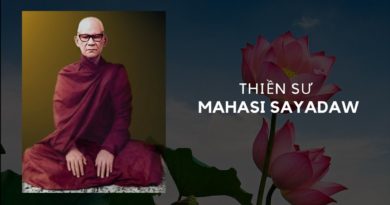The Four Noble Truths
The Buddha taught the Four Noble Truths, which includes the theoretical as well as the practical aspect of his teaching.
- The Noble Truth of Suffering: the entire field of suffering has to be known by experience.
- The Noble Truth of the Arising of Suffering: the eradication of craving has to be experienced.
- The Noble Truth of Cessation of Suffering: the realization of Nibbāna.
- The Noble Truth of the Path leading to the Cessation of Suffering: this has to be developed by repeated practice.
Hearing these truths and understanding them at the intellectual level is good but not sufficient. To benefit from these truths, it is essential to gain knowledge about them through experiential wisdom. Merely learning about them from others and understanding them at the intellectual level cannot make one sthitaprajña or an arahant.
The Buddha taught his five companions how to develop in wisdom and get established in it. All five became established in wisdom and became arahants. In the following quotation from a tradition in our country, we find reference to such arahants:
Tasya prajñā pratiśthitā (Bhagavadgītā 2.57-58)
———
Yathindakhīlo pathavim sito siyā, catubbhi vātehi asampakampiyo tathūpamaṃ sappurisaṃ vadāmi, yo ariyasaccāni avecca passati.
-Dhamma-vandanā, Ratana-sutta-8
-“Just as Indra’s pillar (a strong post at the entrance of a city), that is firmly embedded in the earth remains unshaken by the winds blowing from the four directions, similarly I declare as truly virtuous that person who has fully comprehended the four Noble Truths by direct experience. Such an arahant who is established in wisdom remains unshaken under all circumstances.”
Misconceptions
When the original scriptures containing the Buddha’s teaching and the practice of Vipassana were totally lost from our country, some opponents of the Buddha and some ignorant people spread false comments about the four Noble Truths.
One misconception that they spread was that the teaching was utterly pessimistic and useless; and therefore it was lost from our country—because the word suffering was used four times whereas happiness was not mentioned at all.
Unless one practices Vipassana, how can one understand that the cessation of suffering (dukkhanirodha) is nothing but supreme happiness? Similarly, the practice of the other three truths also leads to supreme happiness.
Another misconception which they spread was, ‘How can suffering be called noble?’
When one practices Vipassana, one understands that when any one of the four Noble Truths is thoroughly experienced, it makes one a noble person.
Keep this in mind and work. Distribute this wonderful Dhamma for your good and for the good of so many suffering people around the world. May pure Dhamma spread! May more and more people start practicing Dhamma to enjoy real peace, harmony, happiness!
Source: https://www.vridhamma.org






